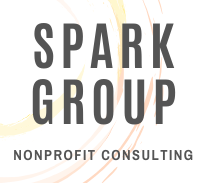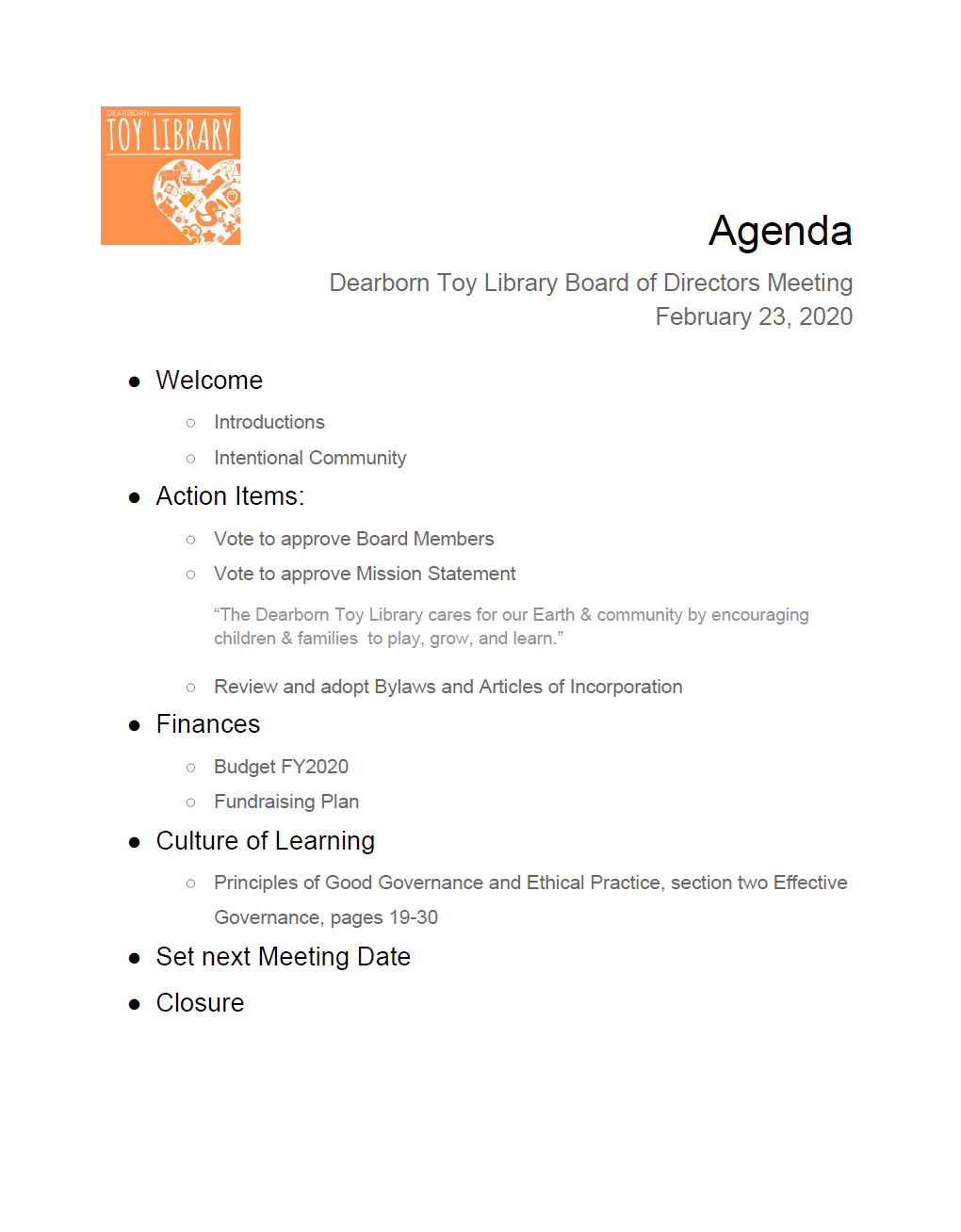How to Start a Nonprofit: Hosting your First Board Meeting
You are ready for your first board meeting! You’ve done a lot of leg work to get to this point, congratulations! If you are following this series, you know that we are using the Dearborn Toy Library, a nonprofit start-up that Spark Group helped create as a case study. In our first three blog posts, you learned how to write a nonprofit business plan, recruit board members, and create your organization’s budget and fundraising plan.
There is a lot to accomplish in your first board meeting. Today, we will discuss a typical agenda and the components necessary to set your nonprofit off on the right foot.
Intentional Community
Your first board meeting is your chance to set your team off on the right foot. Any time groups form, they go through Bruce Tuckman’s stages of group development, Forming, Storming, Norming, and Preforming. To set your group up for success, have your team spend time discussing the type of intentional community they want to create. Establishing your intentional community is an excellent exercise because it states expectations upfront, and you can go back to it in the future when problems arise.
Action Items
In your first meeting, you will need to take several votes. First, you must make an official vote to approve the individuals as the new board members and then vote to approve the appointed Executive Director. These votes need to be reflected in your minutes to apply for your 501c3 status through the IRS.
Next, you need to vote to approve your mission statement. At the Dearborn Toy Library, Spark Group Consulting worked to create a draft mission statement that was ready for the board to discuss and approve. Click here to read more about crafting a powerful mission statement. Having a draft allowed the board to move through the conversation without spending too much time creating a statement from scratch.
The last action item will be to review your articles of incorporation and bylaws. You should spend time creating these drafts before the board meeting as well. Work with a lawyer or use the templates provided to create documents that are right for your organization.
Finances
After you work through the action items together, you will want to review your budget and fundraising plan. Make changes where necessary, and note those changes in your minutes.
Culture of Learning
It is essential to set our board members up for success. One way to do that is to include time during each board meeting to review an article or publication on best practices. The Dearborn Toy Library Board of Directors chose to use the Principles for Good Governance and Ethical Practice developed by the Independent Sector. Find a resource that works well for your organization and spend time in discussion together.
Adjourning
Lastly, make sure to discuss when your next board meeting will occur and who will distribute the minutes to the group. Make sure to save the Minutes, Bylaws, and Articles of Incorporation so that you have them on hand when you are ready to apply for your 501c3 status!
For more information on how to conduct and construct board meetings, contact Spark Group for a free initial consultation.
Join us next week for the last blog in this series, where we will discuss filing for your incorporation!
⭐ Join our weekly newsletter where we share tons of exclusive tips, tools, grant opportunities, and resources to our subscribers. Subscribe on the Spark Group home page.





